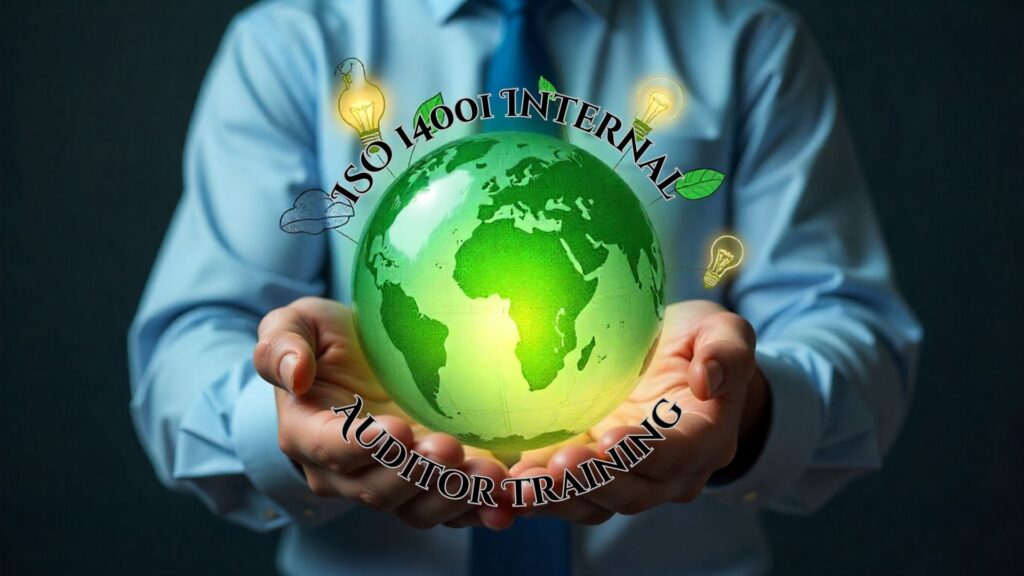Making Environmental Management a Real Asset
You know what’s funny? People often think internal audits are just about ticking boxes and finding faults. Honestly, they’re much more than that—especially when it comes to ISO 14001, the standard for environmental management. For quality and compliance managers, internal auditor training isn’t just another certificate; it’s a toolkit for creating real change within an organization.
Imagine walking into a facility and being able to spot opportunities to reduce waste, save energy, and improve processes—while also keeping environmental risks in check. That’s what a properly trained internal auditor brings to the table. It’s like having a magnifying glass for both efficiency and environmental responsibility.
Why ISO 14001 Internal Auditor Training Matters
Let’s face it, organizations are under increasing pressure to manage their environmental footprint. And while policies and documents matter, they only work if someone knows how to check whether they’re effective. That’s where ISO 14001 internal auditor training comes in.
- Beyond compliance: The training teaches you to see the bigger picture. You’re not just ticking boxes; you’re helping the organization reduce impact and operate more sustainably.
- Confidence in auditing: No more guessing whether a process meets the standard. You’ll have the tools, checklists, and skills to assess confidently.
- Improved processes: Audits aren’t just about problems—they’re about identifying areas where the organization can operate smarter, cleaner, and more efficiently.
Honestly, once you get into the flow of auditing with the right training, it’s surprisingly empowering. You start seeing patterns, spotting hidden risks, and recommending changes that genuinely make a difference.
What Internal Auditor Training Actually Covers
Some people imagine internal auditor training as a classroom full of endless slides about clauses and documentation. Sure, there’s some theory, but the real magic comes from hands-on application.
Here’s what a robust training program typically includes:
- Understanding ISO 14001 clauses: You’ll break down the standard into actionable items, so it’s clear what to look for during audits.
- Audit planning and preparation: Learn how to schedule, scope, and prepare for audits efficiently.
- Conducting audits: From opening meetings to on-site inspections, you’ll gain practical experience.
- Reporting findings: How to document observations, create actionable recommendations, and communicate results effectively.
- Follow-up and continual improvement: Training doesn’t stop at reporting. You’ll learn how to track corrective actions and ensure real impact.
And here’s the thing: good training doesn’t just make you a checker—it turns you into a problem solver. You’ll start asking questions like, “Could this process be less wasteful?” or “Are we really optimizing energy usage?”
The Human Factor: Why People Skills Matter
Here’s a reality check: auditing isn’t just about ticking boxes. It’s about people. You need to interact with managers, operators, and staff, often in sensitive situations.
A great ISO 14001 internal auditor:
- Builds trust: Staff are more likely to cooperate when they see you as a collaborator, not a critic.
- Asks smart questions: Instead of “Did you do this?”, you might ask, “How does this process help reduce environmental impact?”
- Communicates clearly: Findings need to be digestible and actionable, not buried in jargon.
- Honestly, sometimes the biggest challenge isn’t finding nonconformities—it’s encouraging people to embrace change without feeling defensive.
Practical Tools for Internal Auditors
You know what makes auditing so much easier? The right tools. From checklists to digital tracking systems, having organized resources can turn a tedious process into a structured, almost enjoyable workflow.
- Audit checklists – Customized lists ensure no critical points are missed.
- Document review software – Keeps evidence organized and accessible.
- Risk assessment matrices – Helps prioritize findings based on environmental impact and operational significance.
- Follow-up trackers – Ensures corrective actions are implemented and verified.
Picture this: instead of shuffling through piles of paper, you’re navigating a clear, digital roadmap of what needs attention. That’s efficiency and clarity working hand in hand.
Common Challenges in ISO 14001 Audits
Internal audits can feel tricky, especially when you encounter common pitfalls. But recognizing them early makes you a more effective auditor.
- Incomplete documentation: Sometimes processes exist, but records are scattered or inconsistent.
- Resistance to feedback: People can feel defensive when audits uncover issues. Approach it as collaboration rather than critique.
- Complex processes: Operational workflows may be intricate; auditors must understand them deeply enough to identify real environmental risks.
Here’s a tip: always connect your findings back to organizational impact. Highlighting how environmental improvements save money, energy, or resources tends to win buy-in faster than just citing standards.
How Training Enhances Organizational Impact
When auditors are well-trained, the effects ripple throughout the organization. Proper ISO 14001 internal auditor training ensures:
- Better assurance – You can spot gaps before external assessments, reducing surprises.
- Increased environmental performance – More targeted audits mean actionable improvements.
- Cultural shift – Staff start seeing environmental responsibility as part of daily operations, not just policies.
Imagine an organization where each audit uncovers opportunities to cut energy waste, reduce emissions, or improve waste management. That’s not theory—that’s what happens when auditors are trained effectively.
Making Audits Less Intimidating
Audits can feel like a high-pressure environment, but training can make them much more approachable.
- Practice scenarios – Role-playing audits can simulate challenging situations, so auditors aren’t caught off guard.
- Interactive exercises – Reviewing mock documentation or performing sample inspections builds confidence.
- Mentorship – Pairing new auditors with experienced ones ensures guidance during early audits.
You know what’s interesting? Many auditors say the confidence they gain from training is the part they value most. Once you know how to structure and execute an audit, the anxiety melts away.
Continuous Improvement: The Secret Sauce
ISO 14001 emphasizes continual improvement, and internal auditor training is central to that. By consistently assessing processes, auditors create a feedback loop: identify, report, correct, and verify.
- Identify gaps – Spot nonconformities or inefficiencies.
- Recommend improvements – Suggest practical changes that reduce environmental impact.
- Verify corrections – Ensure corrective actions are implemented effectively.
Over time, the organization doesn’t just comply—it evolves. You begin to see patterns and can anticipate areas needing attention, making audits proactive rather than reactive.
Real-World Applications
Here’s where things get tangible. Imagine auditing a facility’s waste management process. A trained internal auditor could:
Spot inefficient disposal methods that lead to higher costs.
Suggest recycling opportunities previously overlooked.
Identify energy-saving adjustments in equipment operation.
Every audit becomes a chance to make the organization more efficient, environmentally responsible, and resilient—without being punitive. That’s the power of ISO 14001 internal auditor training.
Final Thoughts
At the end of the day, ISO 14001 internal auditor training isn’t just about learning standards—it’s about transforming how you see processes, people, and environmental responsibility. It equips quality and compliance managers with tools to make meaningful, lasting improvements.
Think of it this way: every audit becomes a small investment in sustainability, efficiency, and risk management. And honestly, in a world where environmental accountability matters more than ever, that’s a game-changer.



